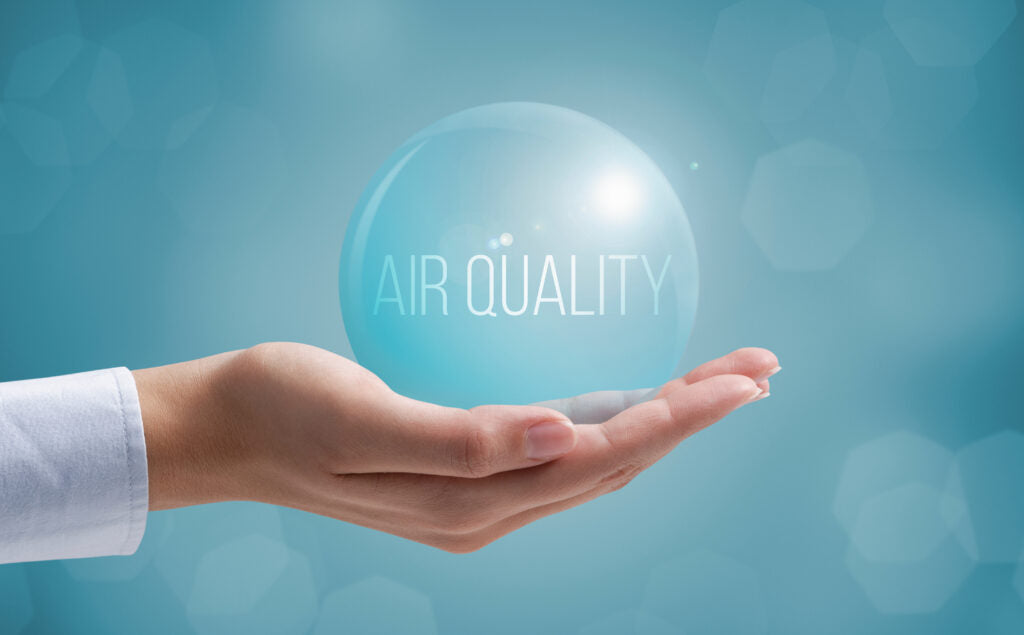1. Overview: importance of air quality
Air quality is a vital element for our health and well-being, directly influencing how we live and work. Imagine breathing clean and fresh air while walking outdoors, compared to breathing air laden with pollutants in a congested city. The difference is evident not only in how we feel but also in the potential long-term impacts on our health.
Air quality has a significant impact on respiratory health. Exposure to pollutants such as airborne particles, toxic gases, and chemical pollutants can cause a range of lung problems, from asthma to chronic lung diseases. This not only compromises our ability to breathe properly but can also reduce our resistance to respiratory illnesses.
But the importance of air quality is not limited to our respiratory health alone. Air pollution can also have serious consequences for cardiovascular health, increasing the risk of heart disease and stroke. Airborne particles can penetrate the circulatory system and cause inflammation and damage to arteries, contributing to issues like hypertension and heart disease.
In addition to the direct impacts on health, air quality also affects our overall well-being and quality of life. Breathing clean and fresh air can improve our mood, concentration, and productivity. Conversely, prolonged exposure to air pollutants can lead to chronic fatigue, irritability, and sleep problems.
Furthermore, air quality has a significant impact on the surrounding environment. Air pollution can damage fragile ecosystems, influence biodiversity, and contribute to climate change.
2. Scientific research: latest studies and discoveries
Scientists continue to conduct studies to better understand the effects of air pollution on human health. These studies may include analyses of the short-term and long-term effects of exposure to airborne particulate matter, toxic gases, and other air pollutants on the respiratory, cardiovascular, and neurological systems. Research in the field of air purification technologies is constantly evolving, with the development of new devices and methods to remove air pollutants and improve air quality in indoor and outdoor environments. Scholars are also examining the link between air quality and climate change, exploring how greenhouse gas emissions and other air pollutants influence global climate and its consequences. Finally, scientists are studying the effects of air pollution on natural ecosystems, including its effects on biodiversity, water and soil quality, and other ecological processes.
3. Contribution of e4life: improving indoor environment
E4Life contributes to improving the indoor environment through the implementation of innovative air purification solutions based on magnetic waves. E4Life’s air purification solutions help to reduce a wide range of air pollutants, including airborne particles, volatile organic compounds (VOCs), bacteria, and viruses. Removing these pollutants helps to create a cleaner and healthier indoor environment for building occupants.
The magnetic waves used in E4Life’s air purification solutions have been shown to be effective in inactivating bacteria and viruses present in the air. This helps to reduce the risk of infectious disease transmission indoors, thus creating a safer environment for occupants. By eliminating air pollutants and inactivating bacteria and viruses, E4Life’s air purification solutions overall improve air quality in indoor environments. Better air quality can have significant benefits for respiratory health, overall well-being, and productivity of building occupants.
E4Life’s air purification solutions can also help reduce unpleasant odors indoors, thus improving the comfort of building occupants and creating a more pleasant environment.
E4Life’s air purification solutions are designed with particular attention to environmental sustainability. By using magnetic waves to purify the air, these solutions reduce reliance on harmful chemicals and contribute to reducing the environmental impact of air purification devices.
4. Buyer’s guide: evaluating air purification options
When evaluating air purification options, it is important to consider a number of factors to choose the solution that best meets your needs.
First and foremost, the first thing to do is to identify specific needs to improve air quality in indoor environments. This may include reducing airborne particles, removing allergens, purifying air from smoke, unpleasant odors, or preventing the spread of bacteria and viruses.
Examining the different air purification technologies available on the market is also the second logical step to follow. Various technologies may include HEPA (High Efficiency Particulate Air) filters, activated carbon filters, UV-C purifiers, ionizers, and devices based on magnetic waves such as those proposed by E4Life. Understanding how these technologies work will help make an informed choice.
Let’s not forget to consider the size of the environment in which you want to install the air purifier. Some devices are designed for smaller spaces, such as single rooms or offices, while others are suitable for larger spaces, such as conference rooms or commercial buildings.
Finally, the key is to look for air purifiers that are certified by independent organizations and offer reliable warranties. Certifications can attest to the effectiveness and safety of the product, while warranties can provide additional protection in case of defects or operational issues.
5. Towards a healthier future: perspectives and developments
Continuous research and development will lead to the introduction of more advanced and effective air purification technologies. This may include the use of new high-performance filtering materials, advanced sterilization technologies, and smart monitoring systems that automatically regulate air quality. The Internet of Things (IoT) will be increasingly integrated into air purification devices, allowing for the collection and real-time analysis of air quality data. This data can be used to optimize the performance of air purifiers, automatically adjust airflow based on needs, and provide users with detailed information on air quality through apps and online platforms. Air purification solutions will become increasingly personalized and adaptable to the specific needs of users and environments. This may include the ability to customize air purification settings based on individual preferences and health needs, as well as automatically adapting to changing environmental conditions. Future developments will also focus on sustainability and energy savings in air purification devices. This may include the use of eco-friendly and sustainable materials in the production of air purifiers, as well as the integration of low-energy consumption technologies that reduce environmental impact. Increased awareness and education about the importance of air quality for human health will lead to greater adoption of air purification solutions in indoor environments. This may include public awareness campaigns, educational programs in schools, and government initiatives aimed at promoting air purification as an integral part of maintaining healthy indoor environments.



Share:
Air purifier in the office: the key to a healthier work
Beyond Disinfectants and Masks: Innovations in Virus Control